Introduction
Are you an archery enthusiast eager to refine your skills or a beginner looking to make a mark in the sporting community? Perfecting your bow tuning can change precision and performance. This comprehensive guide will take you through the ins and outs of bow tuning. It will cover the basic tools you’ll need to advanced techniques that can elevate your archery game. Expect insights, expert tips, and real-world examples that cater to both beginners and seasoned archers.
The Importance Of Bow Tuning: Precision And Performance
Bow tuning isn’t just a technical requirement; it’s a critical factor that can significantly impact your accuracy and overall performance. Whether you’re aiming for a bullseye or participating in competitive archery, a well-tuned bow ensures consistent arrow flight and reduces mechanical failures. Plus, it enhances your equipment’s longevity, making every shot feel smooth and controlled.
Understanding Bow Tuning
What Is Bow Tuning?
Bow tuning involves adjusting various components of your bow to optimize its performance. This includes aligning the bowstring, adjusting the nocking point, and ensuring the cams are synchronized. Each adjustment aims to improve your shots’ consistency and accuracy.
Why Is Bow Tuning Essential For Accuracy And Performance?
A properly tuned bow minimizes arrow flight inconsistencies, leading to tighter groupings and higher accuracy. It also reduces bow components, extending their lifespan. In essence, tuning your bow is like fine tuning a musical instrument; it ensures everything works in harmony for the finest possible performance.
Tools And Equipment For Bow Tuning
List Of Necessary Tools
To start bow tuning, you’ll need some essential tools:
- Bow press
- Allen wrenches
- Nocking pliers
- Bow square
- Tuning forks
- Paper tuning stand
- Arrow saw and scale
Where To Source Credible Bow Tuning Equipment
You can find high-quality bow tuning tools at credible stores like Lancaster Archery, Archery360, and the National Field Archery Association. These platforms offer a wide range of equipment to suit both beginners and professionals.
Step-By-Step Bow Tuning Process
Pre Tuning Inspection
Before tuning, inspect your bow.
- Check for Damage: Look for any visible damage or wear on the bow limbs, risers, and cams.
- Inspect the Bowstring and Cables: Ensure they are in top-quality condition, with no fraying or excessive wear.
- Adjust Draw Weight and Length: Set the draw weight and length to your preferred settings to ensure comfort and accuracy.
Setting The Brace Height
Definition And Importance
Brace height is the distance between the bowstring and the deepest part of the grip. It’s crucial for consistent arrow flight and accuracy.
How To Measure And Adjust Brace Height
Use a bow square to measure the brace height and adjust it according to the manufacturer’s specifications. Proper brace height ensures that the bowstring returns to its resting position smoothly, without affecting the arrow’s speed and trajectory.
“A correctly set brace height can be the difference between hitting your target or missing it entirely.”
– Fred Eichler, Professional Archer.
Adjusting The Nocking Point
Definition And Importance
The nocking point is where your arrow attaches to the bowstring. Setting it correctly is vital for consistent arrow flight.
Step-by-Step Instructions for Setting the Nocking Point
- Place a bow square on the bowstring.
- Mark the desired nocking point height.
- Use nock pliers to attach the nock set.
- Ensure it’s level and secure.
Paper Tuning
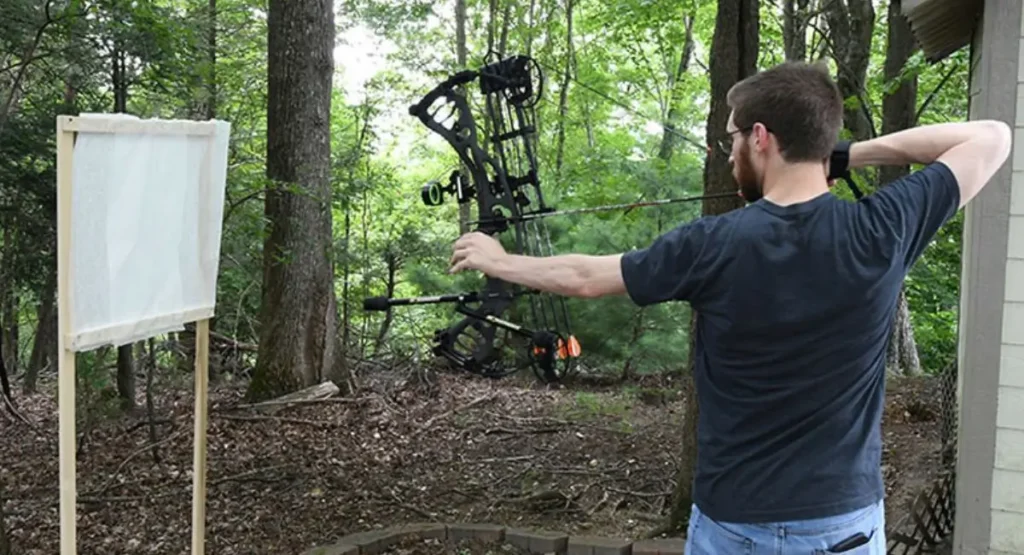
Explanation Of Paper Tuning
Paper tuning involves shooting an arrow through a piece of paper to analyze the tear pattern. This helps fine-tune the bow for optimal arrow flight.
How To Perform Paper Tuning
- Set up a paper tuning stand with a paper sheet.
- Shoot an arrow through the paper from 6-8 feet.
- Analyze the tear pattern (bullet hole, left tear, right tear) to make necessary adjustments.
Troubleshooting Common Issues
- Left Tear: Adjust the rest to the right.
- Right Tear: Adjust the rest to the left.
- High/Low Tear: Adjust the nocking point accordingly.
“Paper tuning is an invaluable technique for diagnosing and fixing arrow flight issues.”
– John Dudley, Archery Coach.
Arrow Tuning
Importance Of Matching Arrows To The Bow
Using arrows that match your bow’s specifications ensures better accuracy and consistency.
Steps For Tuning Arrows
- Spine Selection: Choose the arrows with the correct spine stiffness.
- Cut to Length: Use an arrow saw to cut arrows to the appropriate length.
- Fletching Alignment: Ensure the fletchings are aligned correctly for stable flight.
Advanced Tuning Techniques
Broadhead Tuning
Explanation And Importance
Broadhead tuning ensures that your hunting broadheads fly as accurately as your field points.
Step-By-Step Instructions
- Start by paper tuning your field points.
- Attached broadheads and shoots.
- Adjust the resting and nocking points as needed until broadheads and field points have similar impact points.
French Tuning
Explanation And Importance
French tuning involves adjusting the sight and rest to ensure vertical and horizontal alignment.
Step-By-Step Instructions
- Set up a target with a vertical and horizontal line intersecting in a bullseye.
- Shoot from a short distance (3 yards) to adjust your sight.
- Move back to a longer distance (20 yards) to fine-tune the rest and sight until arrows hit the bullseye consistently.
“French tuning is a simple yet effective method for improving overall accuracy.”
– Tim Gillingham, Professional Bow Technician.
Maintenance Tips
Regular Maintenance Tips
Maintaining your bow regularly ensures its longevity and optimal performance.
- Inspect Weekly: Check for wear and tear on the bowstring, cables, and cams.
- Lubricate Moving Parts: Use appropriate lubricants to keep moving parts functioning smoothly.
- Store Properly: Keep your bow in a cool, dry place to prevent environmental damage.
Seasonal Maintenance Checklist
- Spring: Replace worn-out strings and cables.
- Summer: Inspect and adjust to sight and rest.
- Fall: Perform a thorough tuning session before hunting season.
- Winter: Store in a case to protect against cold damage.
Common Tuning Issues And Solutions
List Of Common Tuning Problems
- Cam Lean: Misalignment of cams causing inconsistent flight patterns.
- Peep Rotation: Twisting of the peep sight, affecting accuracy.
- Arrow Rest Bounce: Inconsistent arrow rest movement causing erratic arrow flight.
Detailed Solutions To Each Issue
- Cam Lean: Adjust the yoke system or use shims to correct alignment.
- Peep Rotation: Twist the bowstring to align the peep sight.
- Arrow Rest Bounce: Adjust the tension and timing of the rest for consistent performance.
“Addressing these common issues can drastically improve your bow’s performance and your overall shooting experience.”
– Alex Wifler, Archery Coach.
Expert Opinions And Credible Sources
To add credibility to this guide, we’ve included insights from prominent archery figures.
- Fred Eichler, Professional Archer: “A correctly set brace height can be the difference between hitting your target or missing it entirely.”
- John Dudley, Archery Coach: “Paper tuning is an invaluable technique for diagnosing and fixing arrow flight issues.”
- Tim Gillingham, Professional Bow Technician: “French tuning is a simple yet effective method for improving overall accuracy.”
Real-World Examples And Success Stories
Competitive Archer Case Study
Sarah, a competitive archer, improved her accuracy by 20% after fine-tuning her bow using the methods outlined above. Her tight groupings and consistent performance have made her a formidable competitor on the archery circuit.
Beginner Archer Success Story
Jake, a beginner, struggled with arrow grouping until he sought help from a certified bow technician. After tuning his bow, Jake noticed significant improvements in his consistency and confidence.
Conclusion
Mastering bow tuning is essential for any archer looking to improve accuracy and performance. By following the steps outlined in this guide, you can ensure your bow is in top condition and ready for any challenge. Remember, consistent maintenance and tuning are key to long-term archery success. Don’t hesitate to share your experiences or ask questions in the comments below.
Frequently Asked Questions (FAQs)
Can You Tune A Bow At Home?
Yes, with the right tools and guidance, you can tune your bow at home. This guide provides step-by-step instructions to help you through the process.
How Do I Know If My Bow Is Out Of Tune?
Signs that your bow is out of tune include inconsistent arrow flight, unusual wear on the bowstring, and difficulty hitting your target consistently.
What Is The Tuning Of Your Bow?
Tuning your bow involves adjusting various components, such as the bowstring, nocking point, and cams, to optimize performance and accuracy.
How Often Do You Tune A Bow?
It’s recommended to tune your bow every few months or before any major competition to ensure optimal performance.
How Do I Aim My Bow Better?
Aiming better involves consistent practice, proper form, and a well-tuned bow. Practice at different distances and conditions can also improve your aim.
How To Yoke Tune A Bow?
Yoke tuning involves adjusting the yoke cables to eliminate cam lean and stabilize the bow. Use a bow press to make necessary adjustments and ensure the cams are properly aligned.
Recent Posts
- 10 Must Know Archery Terms For Beginners
- 6 Mind-Blowing Best Compound Bow For Women
- 7 Best Compound Bow for Beginners for Starting Your Archery Journey
- 7 Viral & Best Recurve Bow For Beginners in 2024
- A Complete Guide To Essential Parts Of A Crossbow
- A Comprehensive Beginners Guide Of Compound Bow Cams



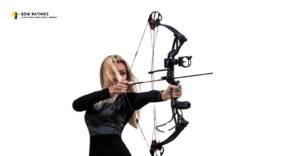
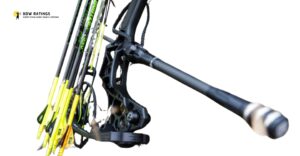
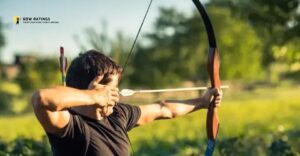
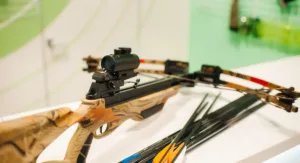
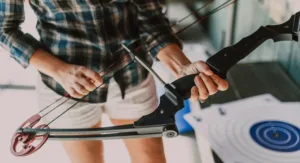
1 thought on “Mastering Bow Tuning For Peak Archery Performance”
Comments are closed.